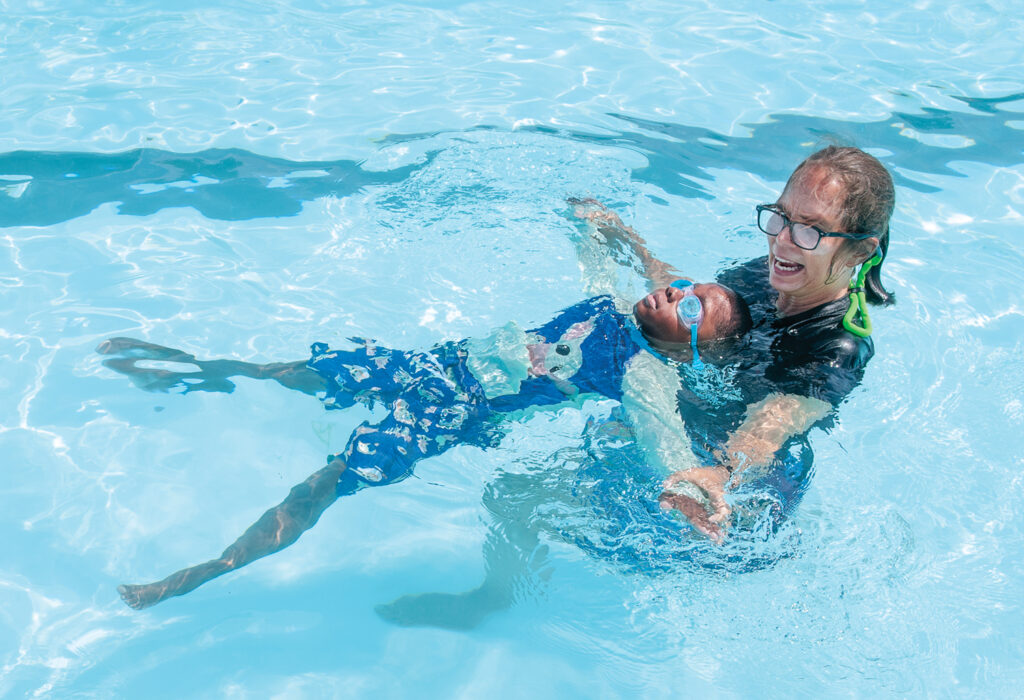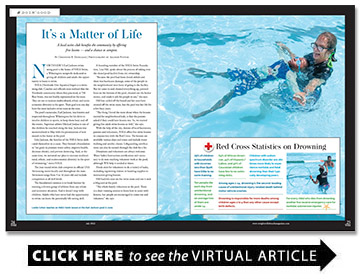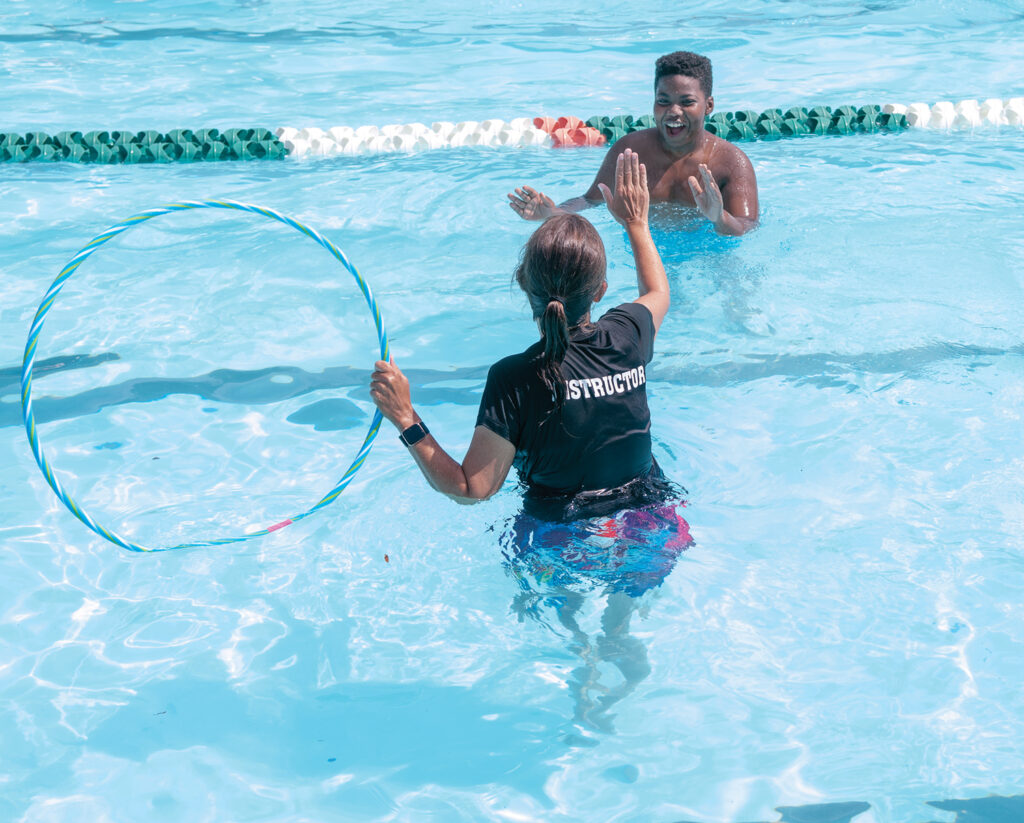It’s a Matter of Life
A local swim club benefits the community by offering free lessons — and a chance to compete.
BY Christine R. Gonzalez

Northside’s Earl Jackson swimming pool is the home of NSEA Swim, a Wilmington nonprofit dedicated to giving all children and adults the opportunity to learn to swim.
NSEA (Northside Elite Aquatics) began as a swimming club. Coaches and officials soon realized that the Northside community where they practiced, at 750 Bess Street, was not bodily represented on the team. They set out to increase multicultural, ethnic and socioeconomic diversity in the sport. Their goal is to one day have the most inclusive swim team in the state.
The pool’s namesake, Earl Jackson, was known and respected throughout Wilmington for his drive to involve children in sports, to keep them busy and off the streets. Superstar athlete Michael Jordan is one of the children he coached along the way. Jackson was memorialized in May with the presentation of new murals in his honor at the pool.
Like Jackson, the families of the NSEA Swim dedicated themselves to a cause. They formed a foundation to “set goals to promote water safety, improve health, decrease obesity, and prevent drowning. And, at the same time, we initiated our plan to increase multicultural, ethnic, and socioeconomic diversity in the sport of swimming,” states NSEA.
The year-round swim club competes in official USA Swimming meets locally and throughout the state. Swimmers range from 5 to 16 years old and include competitors at all skill levels.
The foundation’s mission is to break barriers by training a diverse group of athletes from any ethnic and economic situation. And it doesn’t stop with children. Adults who have never had the opportunity to swim can learn the potentially life-saving skill.
A founding member of the NSEA Swim Foundation, Lisa Hill, spoke about the process of taking over the closed pool facility from city ownership.
“Because the pool had been closed awhile and there was hurricane damage, some of the people in the neighborhood were leery of going to the facility. But we came in and cleaned everything up, painted lines on the bottom of the pool, cleaned out the locker rooms, and made it safe for people to use,” she says.
Hill has cycled off the board and her sons have rotated off the swim team, but the pool was her life for a few busy years.
“The thing I loved the most about when the lessons started for neighborhood kids, is that the parents asked if they could have lessons too. So, we started giving free adult swim lessons as well,” she says.
With the help of the city, dozens of local businesses, parents and volunteers, NSEA offers free swim lessons in conjunction with the Red Cross. The lessons are available various days and times and include water walking and aerobic classes. Lifeguarding certifications can also be earned through the club for a fee.
Donations and volunteers are always welcome. Water Safety Instruction certification isn’t necessary to do non-teaching volunteer work at the pool, although WSI help is needed at times.
Needs exist for volunteers to do a variety of tasks, including registering visitors or handing supplies to instructors giving lessons.
Hill had two sons on the swim team and one is now a lifeguard at the pool.
“The whole family volunteers at the pool. There is a short training session to learn how to assist with lessons, but people are encouraged to come out and volunteer,” she says.
Red Cross Statistics on Drowning
- 79% of children in households with incomes less than $50K have little to no swim training.
- Ten people die each day from unintentional drowning, and on average two of them are under 14.
- 64% of African American, 45% of Hispanic/Latino, and 40% of Caucasian children have few to no swimming skills.
- Children with autism spectrum disorder are 160 times more likely to experience nonfatal and fatal drowning than their typically developing peers.
- Among ages 1-14, drowning is the second-leading cause of unintentional injury-related death behind motor vehicle crashes. Drowning is responsible for more deaths among children ages 1 to 4 than any other cause except birth defects.
- Drowning is responsible for more deaths among children ages 1 to 4 than any other cause except birth defects.
- For every child who dies from drowning, another five receive emergency care for nonfatal submersion injuries.

